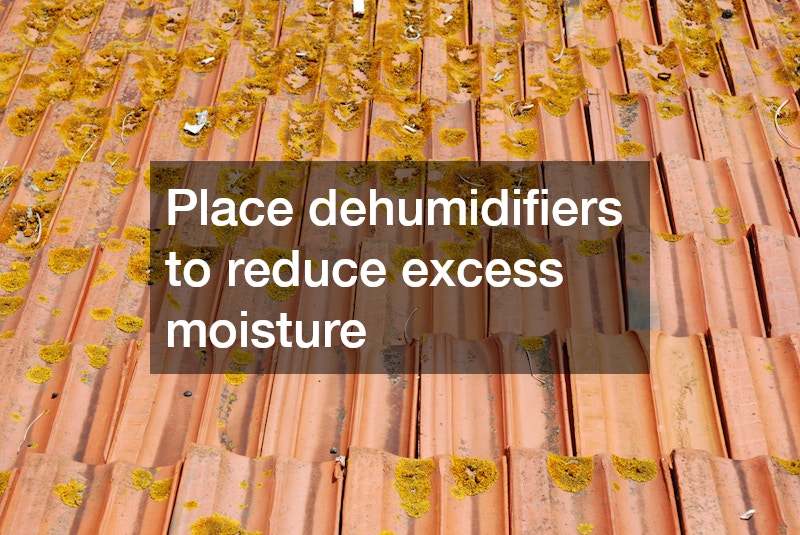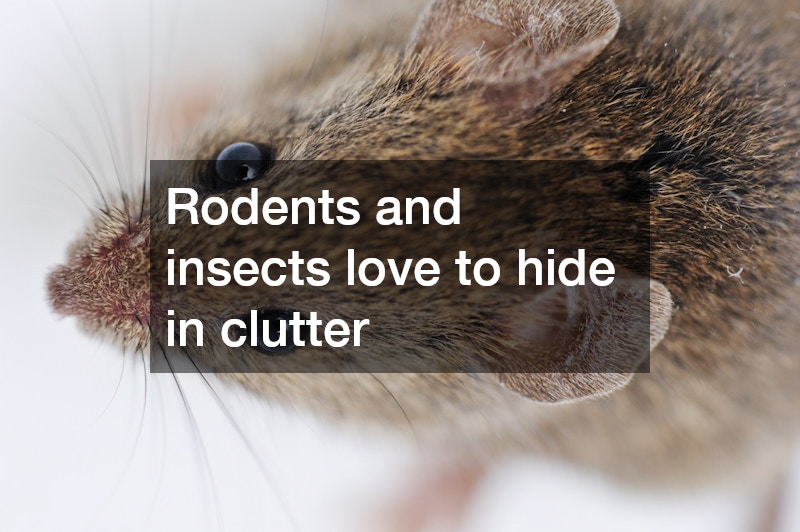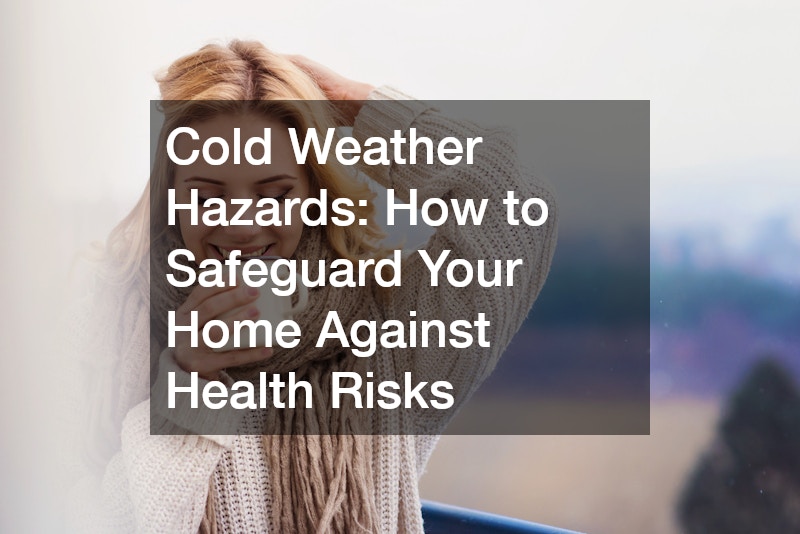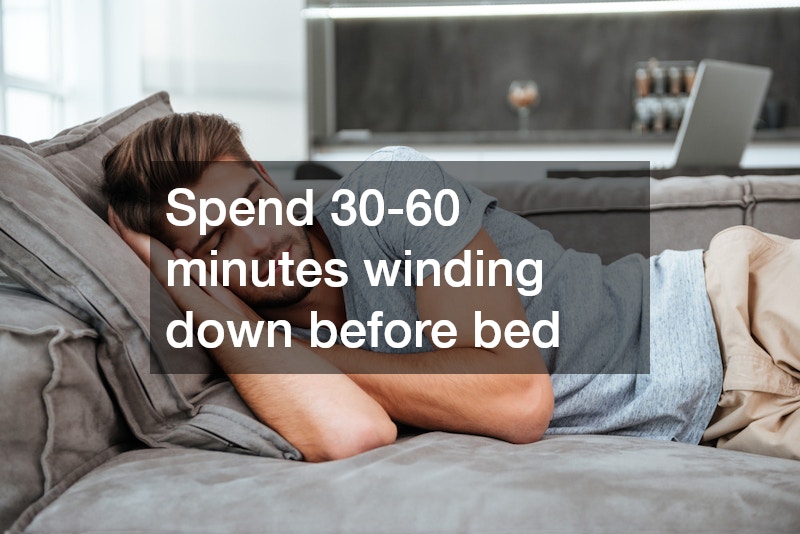Introduction
Winter brings a host of challenges for homeowners, from maintaining indoor air quality to preventing structural damage caused by freezing temperatures. As we close our windows and turn up the heat, the risk of health hazards like mold, poor ventilation, and pest infestations increases. Ignoring these issues can result in respiratory problems, allergic reactions, and even long-term property damage.
By taking proactive steps to address these risks, you can protect your family and your home throughout the cold months. This guide outlines the most common cold-weather hazards and provides actionable solutions to keep your home safe and healthy.
Maintain Healthy Indoor Air Quality
During winter, sealed windows and constant use of heating systems can lead to stagnant air filled with dust, allergens, and pollutants. Poor ventilation increases the risk of respiratory conditions and exacerbates asthma and allergies, while heating system malfunctions can even result in dangerous carbon monoxide leaks.
How to Address This:
- Optimize Heating Systems: Schedule an ac maintenance inspection to ensure your furnace or HVAC system is running efficiently. This helps maintain consistent temperatures and minimizes the buildup of moisture, which can lead to mold.
- Improve Ventilation: Replace air filters regularly to reduce dust and allergens circulating through your home. Add a humidifier if the air becomes too dry, as this can irritate the respiratory system. Hire a duct cleaning service to get to inaccessible areas, as they have specialized equipment to help clean out ducts.
- Clean Air Ducts: Accumulated dust and debris in ducts can circulate contaminants, aggravating allergies and reducing heating efficiency. Get heating and air services every few years can help maintain better air quality.
Address Moisture and Mold Risks
Moisture buildup in your home during the winter months can create the ideal conditions for mold growth. As windows remain closed and heating systems are in constant use, condensation and poor ventilation allow moisture to accumulate in hidden areas. Mold thrives in these damp environments, often forming behind walls, under flooring, in basements, and in attics—places that are not easily visible.
The Health Risks of Mold Exposure
Mold releases tiny spores into the air, which can trigger a range of health problems when inhaled.
- Respiratory Issues: Mold spores can cause wheezing, coughing, and difficulty breathing, particularly in individuals with asthma or chronic obstructive pulmonary disease (COPD).
- Sinus Infections: Prolonged exposure to mold can irritate the nasal passages, leading to chronic sinus infections that may require medical treatment.
- Allergic Reactions: Mold allergies are common, with symptoms including sneezing, itchy eyes, and skin irritation. Children, the elderly, and those with weakened immune systems are especially vulnerable.
- Long-term Health Effects: Prolonged exposure to mold may lead to more severe conditions, such as lung inflammation or mold-induced hypersensitivity pneumonitis, a serious immune system response.
Addressing moisture and mold risks promptly is essential to protecting your health and maintaining the integrity of your home.
How to Address Moisture and Mold Risks
1. Inspect for Mold
Since mold often grows in hidden areas, it can go unnoticed until it causes visible damage or health problems. Regular inspections can help catch mold before it becomes a significant issue.
- Hire a Professional Inspector: Local mold inspection specialists use tools like moisture meters and thermal imaging to detect mold and moisture buildup in hard-to-see areas like behind walls and under floors.
- Identify the Source: Inspectors can trace mold to its source, whether it’s a plumbing leak, condensation, or poor ventilation, and recommend targeted solutions.
- Follow a Remediation Plan: If mold is found, professionals will determine whether the issue can be treated with cleaning and sealing or if more extensive measures, like removing drywall or insulation, are required.
2. Control Humidity Levels
Humidity plays a critical role in mold growth. Maintaining the proper indoor humidity level is one of the most effective ways to prevent mold from thriving.
- Use Dehumidifiers: Place dehumidifiers in high-risk areas, such as basements, laundry rooms, and bathrooms, to reduce excess moisture.
- Ventilate Your Home: Use exhaust fans in kitchens and bathrooms to vent moisture outside, and keep doors and windows slightly open when possible to allow fresh air circulation.
- Monitor Humidity Levels: Invest in a hygrometer to regularly check indoor humidity. Aim to keep levels between 30-50%. Levels above 60% significantly increase the risk of mold growth.

3. Fix Leaks Promptly
Leaks are a common source of moisture that leads to mold formation. Even a small, persistent drip can create enough moisture to support mold growth.
- Inspect Vulnerable Areas Regularly:
- Windows and Doors: Check for gaps or cracks that allow water to seep in during storms or snowmelt.
- Roofs and Attics: Look for missing shingles, damaged flashing, or signs of water stains on the ceiling that indicate leaks.
- Plumbing Fixtures: Examine pipes, faucets, and toilets for signs of leaks, drips, or water pooling underneath.
- Address Leaks Immediately: Use waterproof sealants or repair kits for minor leaks, and call residential plumbing services provider for more significant issues.
Additional Tips for Mold Prevention
- Clean and Dry Wet Areas Quickly: Spills, wet towels, and damp carpets should be dried within 24-48 hours to prevent mold from forming.
- Insulate Cold Surfaces: Pipes, walls, and windows that condense moisture can be insulated to reduce water buildup.
- Check Basement Drainage: Ensure that water is not pooling near your home’s foundation by directing downspouts away from the house and keeping gutters clear.
- Use Mold-Resistant Materials: If you’re renovating or repairing areas prone to moisture, opt for mold-resistant drywall, paint, and insulation.
Why Prompt Action Matters
Ignoring moisture and mold issues can lead to significant consequences beyond health risks. Mold can weaken the structural integrity of your home, damage personal belongings, and reduce property value. Fixing mold problems in their early stages is far less expensive and disruptive than addressing widespread damage later.
Protect Your Plumbing System
Cold temperatures can wreak havoc on your plumbing, causing frozen or burst pipes and significant water damage. Additionally, untreated hard water can lead to mineral buildup in pipes and appliances, reducing their efficiency and lifespan.
How to Address This:
- Prevent Freezing Pipes: Insulate exposed pipes in basements, garages, and attics. On extremely cold nights, allow a small trickle of water to run through faucets to prevent freezing.
- Check for Leaks: Have a plumber inspect your system for vulnerabilities, such as weak joints or small leaks that could worsen in freezing temperatures.
- Treat Hard Water: Install a water softener to minimize mineral buildup and protect your plumbing. Regular maintenance of the system ensures optimal performance throughout the year.
Tackle Pests Seeking Shelter Indoors
As temperatures drop, pests such as mice, rats, cockroaches, and other insects actively seek out warm, sheltered spaces to survive the winter. Your home provides not only warmth but also access to food and water, making it an ideal refuge. While their presence may seem harmless at first, pests can cause significant health and safety concerns if left unchecked.
The Health and Safety Risks of Winter Pests
1. Property Damage
Rodents and insects can cause extensive structural and material damage:
- Chewing and Gnawing: Rats and mice gnaw on wood, wires, insulation, and plastic, potentially causing electrical fires or weakening structural elements.
- Contamination: Cockroaches and rodents contaminate surfaces and stored food with their droppings and urine, leading to spoilage and bacterial growth.
2. Disease Transmission
Many common winter pests are known carriers of harmful pathogens:
- Rodents: Mice and rats can spread diseases such as hantavirus, leptospirosis, and salmonella. They also bring fleas, which can transmit additional diseases.
- Cockroaches: These insects carry bacteria like E. coli and Salmonella and can trigger asthma and allergies due to the allergens present in their saliva, droppings, and shed skins.
3. Allergic Reactions and Asthma Triggers
Both rodents and cockroaches can exacerbate respiratory issues:
- Exposure to cockroach allergens has been shown to increase asthma symptoms, particularly in children.
- Dust contaminated with rodent droppings or urine can cause allergic reactions or respiratory irritation.
How to Address the Problem
1. Seal Entry Points
Preventing pests from entering your home is the first line of defense.
- Inspect Common Entry Points:
- Look for cracks and gaps in your home’s foundation, walls, and around doors and windows.
- Check vents, utility lines, and plumbing penetrations for gaps or openings.
- Seal Off Access:
- Use caulk for small gaps and cracks around windows, door frames, and vents.
- Fill larger holes with steel wool or hardware cloth, as rodents cannot chew through these materials.
- Install door sweeps on exterior doors to block gaps at the bottom.
2. Eliminate Food Sources
Pests are attracted to easy access to food. Removing these sources can make your home less appealing.
- Secure Food Storage:
- Store pantry items like cereal, rice, and pet food in airtight, pest-proof containers made of glass or metal.
- Practice Cleanliness:
- Wipe down kitchen counters, sweep floors, and vacuum regularly to remove crumbs and food residue.
- Wash dirty dishes promptly and avoid leaving pet food out overnight.
- Manage Trash:
- Use trash bins with tight-fitting lids and take out garbage regularly.
- Keep outdoor garbage cans away from your home’s foundation to deter pests.

3. Address Infestations Quickly
If pests have already made their way inside, it’s important to act quickly to prevent their population from growing.
- Set Traps or Use Bait Stations:
- Place traps in high-traffic areas like basements, attics, or behind appliances. For rodents, use snap traps or bait boxes that are child- and pet-safe.
- For cockroaches, use gel baits and sticky traps near areas they frequent, such as under sinks and behind cabinets.
- Monitor and Replace:
- Check traps and bait stations regularly and replace as needed.
- Call a Professional for Larger Infestations:
- Severe infestations may require the expertise of an infestation cleanup professional who can identify the root cause, remove pests, and implement prevention measures.
Additional Tips for Winter Pest Control
- Declutter Your Home: Rodents and insects love to hide in clutter. Keep storage areas tidy and avoid piles of paper, cardboard boxes, and fabric, which can serve as nesting materials.
- Fix Water Leaks: Pests are attracted to water sources. Repair leaks under sinks, in basements, or around exterior plumbing to make your home less hospitable.
- Maintain the Perimeter: Keep bushes and trees trimmed back from your home’s exterior to reduce access points for climbing pests. Ensure firewood is stored at least 20 feet away from your home to avoid harboring rodents and insects.
- Inspect Regularly: Periodically check hidden areas like basements, attics, and crawlspaces for signs of pests, such as droppings, gnawed materials, or unusual smells.
Ensure Outdoor Safety and Prevent Damage
Winter storms and heavy snow can cause significant damage to trees and outdoor structures, posing risks to your home’s safety. Overhanging branches can fall on roofs or vehicles, and clogged gutters can lead to ice dams and water damage.
How to Address This:
- Inspect and Trim Trees: Hire arborists to assess tree health and trim branches that could fall during storms. Weak or dying trees should be removed to prevent accidents.
- Clear Gutters: Remove leaves and debris from gutters to allow proper drainage and prevent ice buildup, which can damage your roof and foundation.
- Secure Outdoor Structures: Check fences, decks, and other outdoor structures for stability before winter weather sets in.
Manage Indoor Water Features
Indoor pools and spas used during the winter require regular maintenance to prevent bacterial growth and ensure safe use. Poorly maintained water can cause skin irritation, eye discomfort, and respiratory problems due to imbalanced chemical levels.
How to Address This:
- Test Water Chemistry: Use a pool testing kit weekly to monitor pH, chlorine, and alkalinity levels. Adjust swimming pool ph levels between 7.2 and 7.8 for optimal safety.
- Maintain Filtration: Run the filtration system regularly to prevent bacterial growth and debris accumulation.
- Consult a Professional: If maintaining water balance seems challenging, seek advice from a pool service provider.
Improve Winter Sleep Quality
Winter can bring challenges that disrupt sleep, such as dry air, colder temperatures, and seasonal illnesses. These factors often exacerbate common sleep-related issues, including snoring, congestion, and sleep apnea. Poor sleep during the colder months doesn’t just leave you feeling fatigued—it can also weaken your immune system, impair cognitive function, and increase your risk of developing chronic health issues such as high blood pressure and diabetes.
To combat these challenges, you need a combination of professional treatment, environmental adjustments, and good sleep habits. Addressing these factors can lead to deeper, more restorative sleep that benefits both your physical and mental health.
The Impact of Poor Winter Sleep
1. Immune System Suppression
Lack of quality sleep can reduce your body’s ability to fight off infections. Studies show that insufficient sleep is linked to a higher susceptibility to colds and the flu—common ailments during winter.
2. Aggravated Sleep Disorders
Dry air and congestion often worsen snoring and sleep apnea symptoms. For those already diagnosed with sleep apnea, untreated or poorly managed conditions can lead to interruptions in breathing, low oxygen levels, and disrupted sleep cycles.
3. Seasonal Disruptions
Shorter days and longer nights during winter can disrupt your circadian rhythm, the natural internal clock that regulates sleep. This can lead to feelings of fatigue during the day and difficulty falling asleep at night.
How to Address Winter Sleep Challenges
1. Seek Professional Advice
If snoring or sleep disturbances are severe, they may indicate an underlying condition like obstructive sleep apnea. Sleep apnea not only disrupts sleep but also poses serious health risks, including cardiovascular disease.
- Consult a Specialist: Visit a local sleep apnea treatment center or consult with a sleep medicine specialist for evaluation and diagnosis.
- Treatment Options:
- CPAP Machines: Continuous positive airway pressure (CPAP) devices deliver steady airflow to keep airways open during sleep, effectively treating sleep apnea.
- Custom Oral Devices: For milder cases, a dentist can provide a custom-fitted oral appliance that repositions the jaw to maintain an open airway.
Early diagnosis and treatment of sleep disorders can significantly improve sleep quality and overall health.
2. Optimize Your Bedroom Environment
A comfortable and well-maintained sleep environment is essential for good-quality sleep, especially during the cold, dry winter months.
- Control Air Quality:
- Use a humidifier to add moisture to dry winter air, which can reduce throat and nasal irritation that exacerbates snoring and congestion.
- Ensure proper ventilation to maintain fresh air circulation without letting the room get too cold.
- Adjust Temperature:
- Set your thermostat to keep the bedroom between 60-67°F, the optimal range for restful sleep. Cooler temperatures encourage your body to reach the lower core temperature required for deep sleep.
- Use breathable, layered bedding to adjust warmth based on your personal comfort.
- Limit Noise and Light:
- Install blackout curtains to block external light, especially for those who live in areas with streetlights or early morning sun.
- Use white noise machines or earplugs to minimize disruptive sounds from heaters or wind.
3. Follow a Routine
Consistency is key when it comes to maintaining good sleep hygiene, particularly during winter when shorter days and holiday stress can throw off your routine.
- Stick to a Sleep Schedule:
- Go to bed and wake up at the same time every day, even on weekends. This helps regulate your circadian rhythm and makes it easier to fall asleep.
- Create a Relaxing Pre-Bedtime Routine:
- Spend 30-60 minutes winding down before bed. Activities like reading, taking a warm bath, or practicing mindfulness exercises can signal to your body that it’s time to sleep.
- Avoid screens, including phones and televisions, during this time. The blue light they emit can suppress melatonin production, making it harder to fall asleep.
- Limit Stimulants:
- Avoid caffeine and nicotine in the evening, as both can disrupt your ability to fall and stay asleep.
- If you enjoy warm beverages before bed, opt for non-caffeinated herbal teas like chamomile or peppermint.
Additional Tips for Better Sleep in Winter
- Use Light Therapy: For those affected by seasonal changes, light therapy can help regulate your circadian rhythm. Spending 20-30 minutes in front of a light therapy box in the morning can reduce symptoms of seasonal affective disorder (SAD) and improve sleep patterns.
- Stay Active: Regular physical activity promotes better sleep quality. Even light exercise, like a daily walk, can help you fall asleep faster and sleep more deeply. Avoid vigorous exercise close to bedtime, as it may have the opposite effect.
- Limit Alcohol Intake: While alcohol may initially make you feel drowsy, it disrupts deep sleep and can worsen snoring or sleep apnea symptoms.
Winter can present numerous health and safety hazards, from poor indoor air quality and mold growth to frozen pipes and pest infestations. Taking preventive measures, such as scheduling professional inspections, addressing leaks, and optimizing your home’s heating and ventilation systems, can help you avoid costly repairs and health problems.
By implementing the strategies outlined in this guide, you can create a safe, healthy living environment for your family during the cold months. Don’t wait for problems to arise—start safeguarding your home today to ensure a warm and worry-free winter season.

